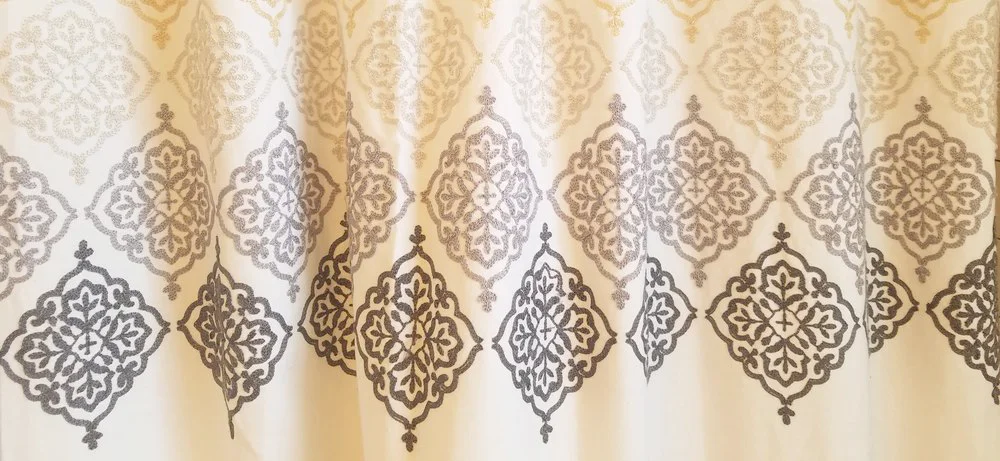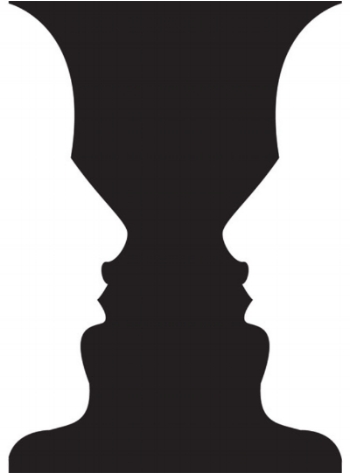
This is my shower curtain.
It was the first thing I bought when we moved into our new home a few years ago. I gazed at its beauty as I lathered up one morning. As I did, I noticed something that I had, until that moment, overlooked: in between the designs stitched into the curtain was another pattern. My eyes shifted and I saw the zig-zagged lines snaking in between the diamonds, performing a show of their very own that I had never recognized before.
Seeing this, a term from art class years ago popped into my consciousness: Negative Space.
In case you’re unfamiliar, here’s a bit of a lesson:
Below you’ll see a classic example of negative space in art. At first glance, you probably see a black vase (the positive space/subject of the composition), but if you shift your perspective you’ll see that the white on the sides, the negative space, creates not only the sides of the vase, but also two faces that are nose to nose.

This concept of being there but not seen, of being a necessary part of the design and yet wholly unappreciated resonated with my experience as a caregiver and so I did a bit of research. Some things that I found:
- Negative space is the space around and between the subject of an image.
- Negative spaces are actual shapes that share edges with the positive shape.
- Just as important as the object itself, negative space helps to define the boundaries of the positive space and brings balance to a composition.
- Seeing negative spaces involves learning to see in a new and abstract way.
- Negative space is understood by relatively few people, but with a bit of practice, it can help you look at photos (life, caregiving) in a whole new way.
Each of these descriptions matches perfectly with the way I have experienced life as a caregiver: an essential yet often overlooked part of the picture without which everything would change.
Caregivers needs are all too often diminished or ignored both by the caregivers themselves and their communities. There is a misperception that caregivers don’t matter or deserve attention or care because they aren’t the one who is sick. The mission of The Negative Space is to change the way caregivers are seen and supported, to help caregivers and their supporters recognize that without them the whole picture would be different, that they share edges with their loved one, that they are just as important as the person in the middle, that they are part of the story.
